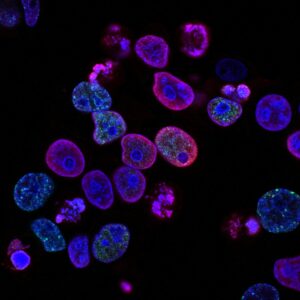Understanding how the gender of a baby is determined during pregnancy involves a combination of biology, genetics, and a bit of chance. I’ll try to give a comprehensive overview of the biological processes and theories that dictate the sex of a human baby.
Basic Genetics of Sex Determination
In humans, gender is genetically determined by the combination of sex chromosomes received from each parent. Humans typically have 46 chromosomes, with two of them being sex chromosomes: X and Y. Women have two X chromosomes (XX), and men have one X and one Y chromosome (XY).
During conception, the fertilizing sperm carries either an X or a Y chromosome, while the egg from the mother always carries an X chromosome. If the sperm carrying an X chromosome fertilizes the egg, the resulting zygote will have XX chromosomes and develop into a female. If a sperm carrying a Y chromosome fertilizes the egg, the resulting zygote will have XY chromosomes and develop into a male.
Conception and Fertilization
When an egg is released from the mother’s ovaries during ovulation, it travels down the fallopian tube and is available for fertilization. Millions of sperm are released during ejaculation, but only one will successfully fertilize the egg. Each sperm has an approximately 50% chance of carrying an X or a Y chromosome.
Early Embryonic Development
Once the fertilized egg (zygote) forms, it begins to divide as it moves towards the uterus. By the time it implants into the uterine wall, it has developed into a blastocyst. At this stage, the sex of the baby is already determined but not yet apparent in its physical characteristics.
Hormonal Influence
The presence or absence of a Y chromosome triggers the development of male or female characteristics. The SRY gene on the Y chromosome initiates the formation of testes, which then produce testosterone. This hormone catalyzes the development of male characteristics such as body hair, deepening of the voice, and muscle growth.
In the absence of a Y chromosome, the embryonic gonads develop into ovaries. The ovaries produce estrogen, which triggers the development of female characteristics such as breasts and wider hips.
Genetic Variations and Disorders
It’s important to note that the chromosomal makeup isn’t the only factor in gender determination. Various intersex conditions may result from genetic variations. For example, Androgen Insensitivity Syndrome (AIS) occurs when an individual has XY chromosomes but is insensitive to androgens, leading to the development of female characteristics.
Environmental and Social Considerations
While genetics primarily determines gender, social and environmental factors may also influence gender identity. These aspects are beyond the biological processes happening during pregnancy but are important in the broader context of understanding gender.
Ethical Implications
Advancements in genetics allow parents to determine the sex of their child before birth, sometimes leading to gender selection, which raises ethical questions. Some cultures display a preference for one gender over the other, leading to skewed gender ratios in certain regions.
Conclusion
The determination of a baby’s gender is a complex interplay of genetics, biology, and even a bit of luck, with the combination of sex chromosomes from each parent being the primary determinant. Medical and technological advancements have allowed us to understand and even influence this process, but they also bring along ethical and social implications that society must grapple with.
This overview provides a scientific perspective on how the gender of a baby is decided during pregnancy, shedding light on the biological, genetic, and ethical dimensions of this fascinating aspect of human life.





